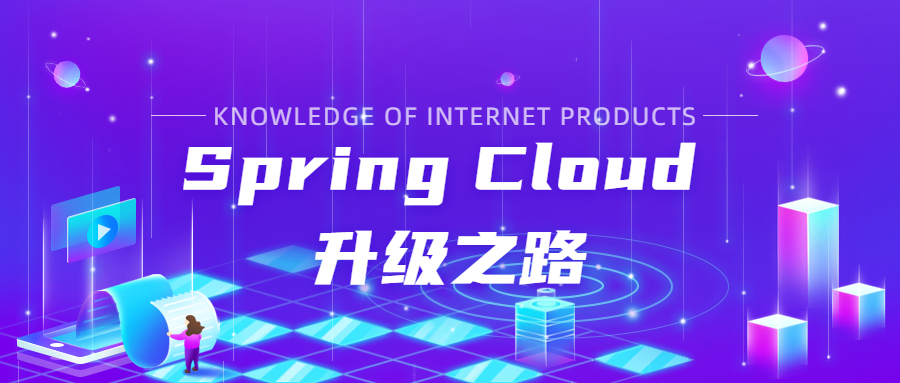
本系列代码地址:https://github.com/HashZhang/spring-cloud-scaffold/tree/master/spring-cloud-iiford
我们使用 Spring Cloud 官方推荐的 Spring Cloud LoadBalancer 作为我们的客户端负载均衡器。上一节我们了解了 Spring Cloud LoadBalancer 的结构,接下来我们来说一下我们在使用 Spring Cloud LoadBalancer 要实现的功能:
- 我们要实现不同集群之间不互相调用,通过实例的
metamap中的zone配置,来区分不同集群的实例。只有实例的metamap中的zone配置一样的实例才能互相调用。这个通过实现自定义的ServiceInstanceListSupplier即可实现 - 负载均衡的轮询算法,需要请求与请求之间隔离,不能共用同一个 position 导致某个请求失败之后的重试还是原来失败的实例。上一节看到的默认的
RoundRobinLoadBalancer是所有线程共用同一个原子变量position每次请求原子加 1。在这种情况下会有问题:假设有微服务 A 有两个实例:实例 1 和实例 2。请求 A 到达时,RoundRobinLoadBalancer返回实例 1,这时有请求 B 到达,RoundRobinLoadBalancer返回实例 2。然后如果请求 A 失败重试,RoundRobinLoadBalancer又返回了实例 1。这不是我们期望看到的。
针对这两个功能,我们分别编写自己的实现。

Spring Cloud LoadBalancer 中的 zone 配置
Spring Cloud LoadBalancer 定义了 LoadBalancerZoneConfig:
public class LoadBalancerZoneConfig {
//标识当前负载均衡器处于哪一个 zone
private String zone;
public LoadBalancerZoneConfig(String zone) {
this.zone = zone;
}
public String getZone() {
return zone;
}
public void setZone(String zone) {
this.zone = zone;
}
}如果没有引入 Eureka 相关依赖,则这个 zone 通过 spring.cloud.loadbalancer.zone 配置:
LoadBalancerAutoConfiguration
@Bean
@ConditionalOnMissingBean
public LoadBalancerZoneConfig zoneConfig(Environment environment) {
return new LoadBalancerZoneConfig(environment.getProperty("spring.cloud.loadbalancer.zone"));
}如果引入了 Eureka 相关依赖,则如果在 Eureka 元数据配置了 zone,则这个 zone 会覆盖 Spring Cloud LoadBalancer 中的 LoadBalancerZoneConfig:
EurekaLoadBalancerClientConfiguration
@PostConstruct
public void postprocess() {
if (!StringUtils.isEmpty(zoneConfig.getZone())) {
return;
}
String zone = getZoneFromEureka();
if (!StringUtils.isEmpty(zone)) {
if (LOG.isDebugEnabled()) {
LOG.debug("Setting the value of '" + LOADBALANCER_ZONE + "' to " + zone);
}
//设置 `LoadBalancerZoneConfig`
zoneConfig.setZone(zone);
}
}
private String getZoneFromEureka() {
String zone;
//是否配置了 spring.cloud.loadbalancer.eureka.approximateZoneFromHostname 为 true
boolean approximateZoneFromHostname = eurekaLoadBalancerProperties.isApproximateZoneFromHostname();
//如果配置了,则尝试从 Eureka 配置的 host 名称中提取
//实际就是以 . 分割 host,然后第二个就是 zone
//例如 www.zone1.com 就是 zone1
if (approximateZoneFromHostname && eurekaConfig != null) {
return ZoneUtils.extractApproximateZone(this.eurekaConfig.getHostName(false));
}
else {
//否则,从 metadata map 中取 zone 这个 key
zone = eurekaConfig == null ? null : eurekaConfig.getMetadataMap().get("zone");
//如果这个 key 不存在,则从配置中以 region 从 zone 列表取第一个 zone 作为当前 zone
if (StringUtils.isEmpty(zone) && clientConfig != null) {
String[] zones = clientConfig.getAvailabilityZones(clientConfig.getRegion());
// Pick the first one from the regions we want to connect to
zone = zones != null && zones.length > 0 ? zones[0] : null;
}
return zone;
}
}实现 SameZoneOnlyServiceInstanceListSupplier
为了实现通过 zone 来过滤同一 zone 下的实例,并且绝对不会返回非同一 zone 下的实例,我们来编写代码:
SameZoneOnlyServiceInstanceListSupplier
/**
* 只返回与当前实例同一个 Zone 的服务实例,不同 zone 之间的服务不互相调用
*/
public class SameZoneOnlyServiceInstanceListSupplier extends DelegatingServiceInstanceListSupplier {
/**
* 实例元数据 map 中表示 zone 配置的 key
*/
private final String ZONE = "zone";
/**
* 当前 spring cloud loadbalancer 的 zone 配置
*/
private final LoadBalancerZoneConfig zoneConfig;
private String zone;
public SameZoneOnlyServiceInstanceListSupplier(ServiceInstanceListSupplier delegate, LoadBalancerZoneConfig zoneConfig) {
super(delegate);
this.zoneConfig = zoneConfig;
}
@Override
public Flux<List<ServiceInstance>> get() {
return getDelegate().get().map(this::filteredByZone);
}
//通过 zoneConfig 过滤
private List<ServiceInstance> filteredByZone(List<ServiceInstance> serviceInstances) {
if (zone == null) {
zone = zoneConfig.getZone();
}
if (zone != null) {
List<ServiceInstance> filteredInstances = new ArrayList<>();
for (ServiceInstance serviceInstance : serviceInstances) {
String instanceZone = getZone(serviceInstance);
if (zone.equalsIgnoreCase(instanceZone)) {
filteredInstances.add(serviceInstance);
}
}
if (filteredInstances.size() > 0) {
return filteredInstances;
}
}
/**
* @see ZonePreferenceServiceInstanceListSupplier 在没有相同zone实例的时候返回的是所有实例
* 我们这里为了实现不同 zone 之间不互相调用需要返回空列表
*/
return List.of();
}
//读取实例的 zone,没有配置则为 null
private String getZone(ServiceInstance serviceInstance) {
Map<String, String> metadata = serviceInstance.getMetadata();
if (metadata != null) {
return metadata.get(ZONE);
}
return null;
}
}
在之前章节的讲述中,我们提到了我们使用 spring-cloud-sleuth 作为链路追踪库。我们想可以通过其中的 traceId,来区分究竟是否是同一个请求。
RoundRobinWithRequestSeparatedPositionLoadBalancer
//一定必须是实现ReactorServiceInstanceLoadBalancer
//而不是ReactorLoadBalancer<ServiceInstance>
//因为注册的时候是ReactorServiceInstanceLoadBalancer
@Log4j2
public class RoundRobinWithRequestSeparatedPositionLoadBalancer implements ReactorServiceInstanceLoadBalancer {
private final ServiceInstanceListSupplier serviceInstanceListSupplier;
//每次请求算上重试不会超过1分钟
//对于超过1分钟的,这种请求肯定比较重,不应该重试
private final LoadingCache<Long, AtomicInteger> positionCache = Caffeine.newBuilder().expireAfterWrite(1, TimeUnit.MINUTES)
//随机初始值,防止每次都是从第一个开始调用
.build(k -> new AtomicInteger(ThreadLocalRandom.current().nextInt(0, 1000)));
private final String serviceId;
private final Tracer tracer;
public RoundRobinWithRequestSeparatedPositionLoadBalancer(ServiceInstanceListSupplier serviceInstanceListSupplier, String serviceId, Tracer tracer) {
this.serviceInstanceListSupplier = serviceInstanceListSupplier;
this.serviceId = serviceId;
this.tracer = tracer;
}
@Override
public Mono<Response<ServiceInstance>> choose(Request request) {
return serviceInstanceListSupplier.get().next().map(serviceInstances -> getInstanceResponse(serviceInstances));
}
private Response<ServiceInstance> getInstanceResponse(List<ServiceInstance> serviceInstances) {
if (serviceInstances.isEmpty()) {
log.warn("No servers available for service: " + this.serviceId);
return new EmptyResponse();
}
return getInstanceResponseByRoundRobin(serviceInstances);
}
private Response<ServiceInstance> getInstanceResponseByRoundRobin(List<ServiceInstance> serviceInstances) {
if (serviceInstances.isEmpty()) {
log.warn("No servers available for service: " + this.serviceId);
return new EmptyResponse();
}
//为了解决原始算法不同调用并发可能导致一个请求重试相同的实例
Span currentSpan = tracer.currentSpan();
if (currentSpan == null) {
currentSpan = tracer.newTrace();
}
long l = currentSpan.context().traceId();
AtomicInteger seed = positionCache.get(l);
int s = seed.getAndIncrement();
int pos = s % serviceInstances.size();
log.info("position {}, seed: {}, instances count: {}", pos, s, serviceInstances.size());
return new DefaultResponse(serviceInstances.stream()
//实例返回列表顺序可能不同,为了保持一致,先排序再取
.sorted(Comparator.comparing(ServiceInstance::getInstanceId))
.collect(Collectors.toList()).get(pos));
}
}
在上一节,我们提到了可以通过 @LoadBalancerClients 注解配置默认的负载均衡器配置,我们这里就是通过这种方式进行配置。首先在 spring.factories 中添加自动配置类:
org.springframework.boot.autoconfigure.EnableAutoConfiguration=\
com.github.hashjang.spring.cloud.iiford.service.common.auto.LoadBalancerAutoConfiguration然后编写这个自动配置类,其实很简单,就是添加一个 @LoadBalancerClients 注解,设置默认配置类:
@Configuration(proxyBeanMethods = false)
@LoadBalancerClients(defaultConfiguration = DefaultLoadBalancerConfiguration.class)
public class LoadBalancerAutoConfiguration {
}编写这个默认配置类,将上面我们实现的两个类,组装进去:
DefaultLoadBalancerConfiguration
@Configuration(proxyBeanMethods = false)
public class DefaultLoadBalancerConfiguration {
@Bean
public ServiceInstanceListSupplier serviceInstanceListSupplier(
DiscoveryClient discoveryClient,
Environment env,
ConfigurableApplicationContext context,
LoadBalancerZoneConfig zoneConfig
) {
ObjectProvider<LoadBalancerCacheManager> cacheManagerProvider = context
.getBeanProvider(LoadBalancerCacheManager.class);
return //开启服务实例缓存
new CachingServiceInstanceListSupplier(
//只能返回同一个 zone 的服务实例
new SameZoneOnlyServiceInstanceListSupplier(
//启用通过 discoveryClient 的服务发现
new DiscoveryClientServiceInstanceListSupplier(
discoveryClient, env
),
zoneConfig
)
, cacheManagerProvider.getIfAvailable()
);
}
@Bean
public ReactorLoadBalancer<ServiceInstance> reactorServiceInstanceLoadBalancer(
Environment environment,
ServiceInstanceListSupplier serviceInstanceListSupplier,
Tracer tracer
) {
String name = environment.getProperty(LoadBalancerClientFactory.PROPERTY_NAME);
return new RoundRobinWithRequestSeparatedPositionLoadBalancer(
serviceInstanceListSupplier,
name,
tracer
);
}
}这样,我们就实现了自定义的负载均衡器。也理解了 Spring Cloud LoadBalancer 的使用。

我们这一节详细分析在我们项目中使用 Spring Cloud LoadBalancer 要实现的功能,实现了自定义的负载均衡器,也理解了 Spring Cloud LoadBalancer 的使用。下一节我们使用单元测试验证我们要实现的这些功能是否有效。
微信搜索“我的编程喵”关注公众号,每日一刷,轻松提升技术,斩获各种offer:


